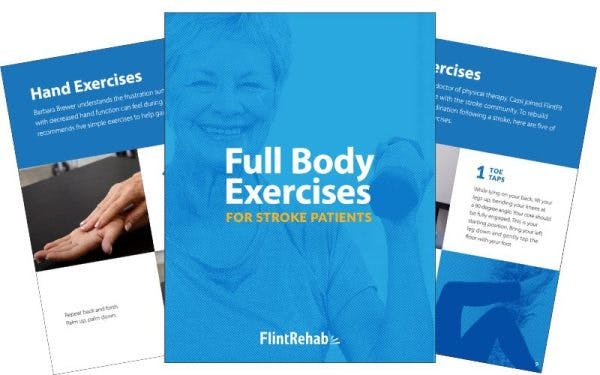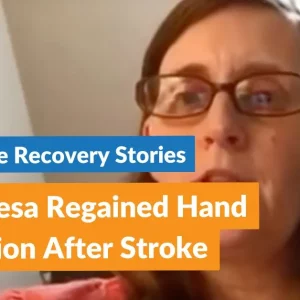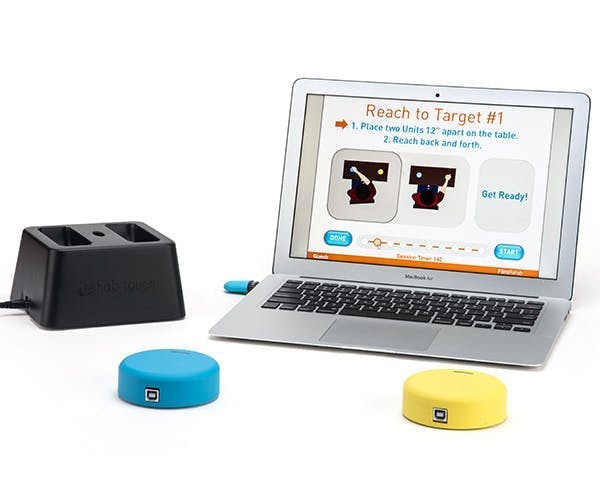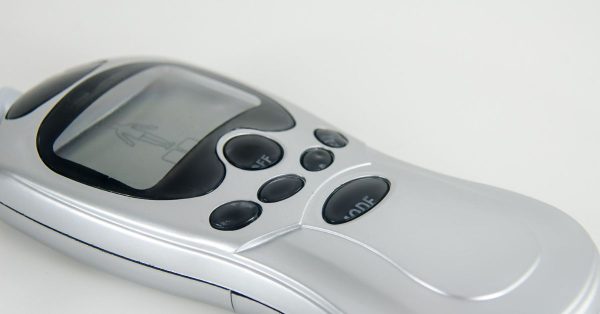Recovering from a stroke can feel overwhelming, especially when progress seems slower than expected. Every recovery journey is unique, but certain choices and habits can unintentionally make the process harder. The good news is that many of these setbacks are avoidable once you understand what affects the brain and body during rehabilitation.
In this guide, we’ll walk through the most common mistakes people make during stroke recovery and share practical tips to help you stay on track.
Why Stroke Recovery Can Feel Overwhelming
Stroke recovery isn’t just about regaining movement or strength. It often involves relearning basic tasks, adjusting to cognitive and emotional changes, and finding new ways to live independently. With so many moving parts, it’s easy to feel lost or unsure about the best next step.
Understanding which missteps can slow recovery puts you in a better position to take control of the process and make choices that support long-term success.
Mistake #1: Skipping or Delaying Therapy
Starting therapy as early as possible is one of the most important factors in successful stroke recovery. After a stroke, the brain goes through a period of heightened neuroplasticity, which allows it to create new pathways and relearn lost skills more quickly. Delaying therapy means missing out on this critical window, and skipping sessions once you’ve started can lead to slower progress and more frustration.
To avoid this, begin therapy as soon as your doctor gives the green light. Stick to the treatment schedule provided by your care team and ask about home exercises you can do between sessions to keep your momentum going.
Of note, while many studies demonstrate that starting intensive therapy within the first 2 weeks following stroke is beneficial, some have found that starting within 24 hours of stroke onset may be harmful. Therefore, always wait for your doctor’s approval before beginning.
Key Takeaways:
- Start therapy as early as possible
- Follow your care team’s schedule
- Practice home exercises regularly
Mistake #2: Relying on Passive Recovery
It’s common to assume recovery will happen naturally over time, especially if some function returns early on. While some amount of spontaneous recovery is possible, progress often plateaus without active effort. Muscles can weaken, mobility may decline, and everyday tasks can remain challenging longer than necessary.
An active recovery approach works best. Participate fully in your therapy sessions, and utilize home therapy tools like FitMi or MusicGlove to practice movement at home whenever possible. Small, consistent steps often lead to the biggest gains.
Key Takeaways:
- Be actively involved in therapy
- Use engaging rehab tools if available
- Practice movement at home daily
Mistake #3: Ignoring the Importance of Repetition
One of the most effective ways to improve after a stroke is through repetition. The brain rewires itself by practicing the same movements and tasks over and over until they become easier. Without enough repetition, those neural connections don’t have the chance to strengthen, and progress can stall.
Make repetition part of your daily routine. Whether it’s mobility exercises, speech practice, or fine motor skills, aim to practice regularly outside your formal therapy sessions. Even short, frequent bursts of activity can make a lasting difference.
Key Takeaways:
- Repetition strengthens brain connections
- Practice daily, even outside of therapy
- Short, frequent exercises are highly effective
Mistake #4: Avoiding Challenging Movements
It’s natural to favor your “stronger” side after a stroke, especially when certain tasks feel frustrating or impossible. But avoiding difficult movements can lead to learned non-use, where the affected limb becomes weaker and harder to rehabilitate over time.
Instead, make a conscious effort to use the affected side during everyday activities. Ask your therapist about task-specific training that targets problem areas, and incorporate functional tasks like buttoning a shirt, pouring water, or picking up utensils into your exercises. Challenging yourself safely promotes recovery.
Key Takeaways:
- Use your affected side whenever possible
- Incorporate real-life tasks into therapy
- Focus on gradual, safe challenges
Mistake #5: Neglecting Cognitive and Speech Therapy
Stroke recovery involves more than regaining physical function. Many survivors face difficulties with memory, attention, problem-solving, or language. Ignoring these challenges can limit independence and reduce overall quality of life.
Some survivors may not be able to recognize that they are experiencing language or cognition difficulties. In these cases, it is essential for loved ones or caregivers to bring these symptoms to the attention of their care team to be assessed.
Addressing cognitive and communication needs early makes a significant difference. Request an evaluation for cognitive and speech therapy, practice your exercises at home, and incorporate activities like reading, puzzles, or apps designed to strengthen brain function. Treating the mind is just as important as treating the body.
Key Takeaways:
- Get assessed for cognitive and speech needs
- Practice speech exercises daily
- Include brain-training activities regularly
Mistake #6: Overlooking Emotional Health
Recovering from a stroke isn’t just a physical process — it can also be emotionally draining. Feelings of frustration, anxiety, or depression are common but often overlooked. When emotional health isn’t addressed, motivation suffers, making it harder to stay engaged in therapy and daily routines.
Talk openly with your care team about mood changes and explore options like counseling, support groups, or relaxation techniques. Taking care of your emotional well-being can help you stay focused, energized, and resilient throughout your recovery.
Key Takeaways:
- Prioritize mental health along with physical recovery
- Seek counseling or join a support group
- Build a balanced routine with enjoyable activities
Mistake #7: Not Setting Specific Recovery Goals
Having vague expectations like “getting better” can make recovery feel endless and discouraging. Without clear goals, it’s difficult to measure progress or know whether therapy strategies are working.
Set structured, realistic goals with your therapist and break them into smaller milestones you can track. For example, aim to improve enough balance to walk to the mailbox or regain enough dexterity to cook a simple meal. Celebrating small achievements keeps motivation high and reminds you how far you’ve come.
Key Takeaways:
- Set realistic, specific recovery goals
- Break goals into manageable steps
- Celebrate every milestone along the way
Mistake #8: Skipping Home Exercises
Therapy sessions are important, but recovery also depends on what happens between appointments. Skipping home exercises means missing opportunities to strengthen your body and reinforce the skills learned in therapy. Over time, this can significantly slow progress.
Treat home exercises as an essential part of recovery. Build them into your daily schedule and ask your therapist for modifications if certain movements are too challenging. Consistency at home bridges the gap between therapy sessions and accelerates improvement.
Key Takeaways:
- Stick to home exercise routines
- Make them part of your daily schedule
- Ask for modified exercises if needed
Mistake #9: Not Adjusting Lifestyle Habits
Stroke recovery doesn’t happen in isolation — lifestyle choices can directly affect your progress and reduce the risk of another stroke. Poor diet, smoking, excessive alcohol, or lack of physical activity can all make recovery harder and increase health risks.
Adopt heart-healthy habits by focusing on nutrient-rich foods like fruits, vegetables, lean proteins, and whole grains. Stay hydrated, avoid smoking, and limit alcohol intake. These changes don’t just support recovery but also improve long-term overall health.
Key Takeaways:
- Focus on a nutrient-rich, heart-healthy diet
- Stay hydrated and active
- Avoid smoking and limit alcohol
Mistake #10: Underestimating the Role of Rest and Sleep
Pushing yourself too hard during recovery can backfire. Fatigue is common after a stroke, and ignoring your body’s need for rest can lead to frustration, slower progress, and even setbacks. Sleep also plays a critical role in brain healing and memory formation.
Aim for seven to nine hours of sleep each night and take short breaks during the day when needed. Creating a calming bedtime routine and minimizing distractions can improve sleep quality, giving your brain and body time to recover.
Key Takeaways:
- Get enough sleep for brain recovery
- Take short breaks when fatigued
- Use calming routines to improve sleep quality
Mistake #11: Going Through Recovery Alone
Stroke recovery can feel isolating, especially when friends and family don’t fully understand what you’re experiencing. Without a support system, staying motivated and consistent with therapy can be difficult.
Involve loved ones in your recovery whenever possible, whether by attending therapy sessions, helping with exercises, or simply offering encouragement. Joining stroke support groups — online or in person — can also provide understanding, connection, and practical advice from people going through similar challenges.
Key Takeaways:
- Lean on loved ones for support
- Join stroke recovery support groups
- Stay socially connected to avoid isolation
Mistake #12: Not Tracking Progress
It’s easy to lose sight of improvements during stroke recovery, especially when progress feels slow. Without tracking milestones, you might miss signs of success and overlook when therapy plans need adjusting.
Keep a recovery journal to record exercises, goals, and achievements. Use apps or rehabilitation tools that monitor performance over time and share updates with your therapist regularly. Tracking your progress builds confidence and helps your care team refine your treatment plan.
Key Takeaways:
- Track goals and achievements in a journal
- Use apps or rehab tools to measure progress
- Share updates with your care team
Mistake #13: Assuming Recovery Stops After a Year
There’s a common belief that most stroke recovery happens within the first year, but that’s not entirely true. While early improvements are often faster, progress can continue for years with consistent effort and the right strategies.
Stay committed to your therapy and home exercises even after the first year. Explore advanced rehab tools and programs designed for long-term recovery, and don’t hesitate to ask your care team about opportunities to keep challenging your brain and body.
Key Takeaways:
- Recovery can continue for years
- Keep up therapy beyond the first year
- Use advanced tools for long-term gains
Final Thoughts
Recovering from a stroke is rarely straightforward, and it’s normal to experience setbacks along the way. The key is recognizing which habits or choices might be slowing your progress and making small, intentional changes to stay on track. Consistency, patience, and support are just as important as the therapy itself.
By avoiding these common mistakes, you give your brain and body the best chance to heal. Keep showing up for your therapy sessions, stick with your home exercises, take care of your emotional health, and lean on your support network when things feel tough. Progress may happen gradually, but every step forward matters.
Remember: recovery doesn’t stop after a few months or even a year. With persistence and the right strategies, meaningful improvement is always possible — and your efforts today can help you regain greater independence and quality of life tomorrow.









